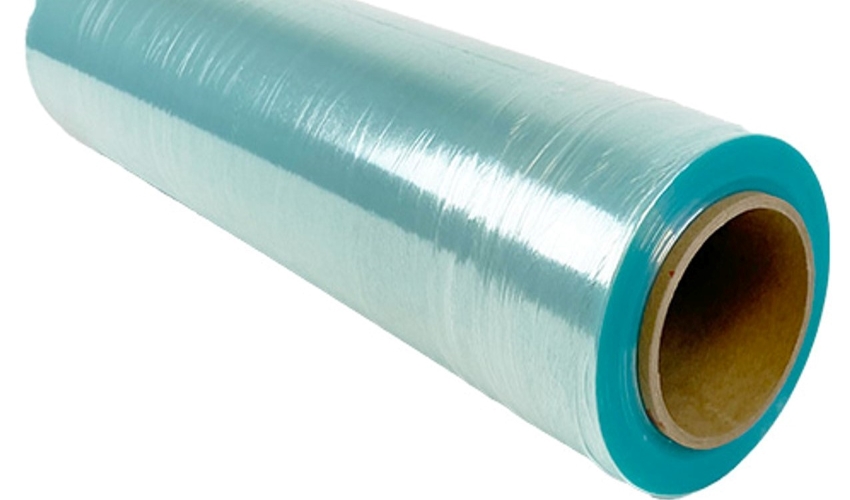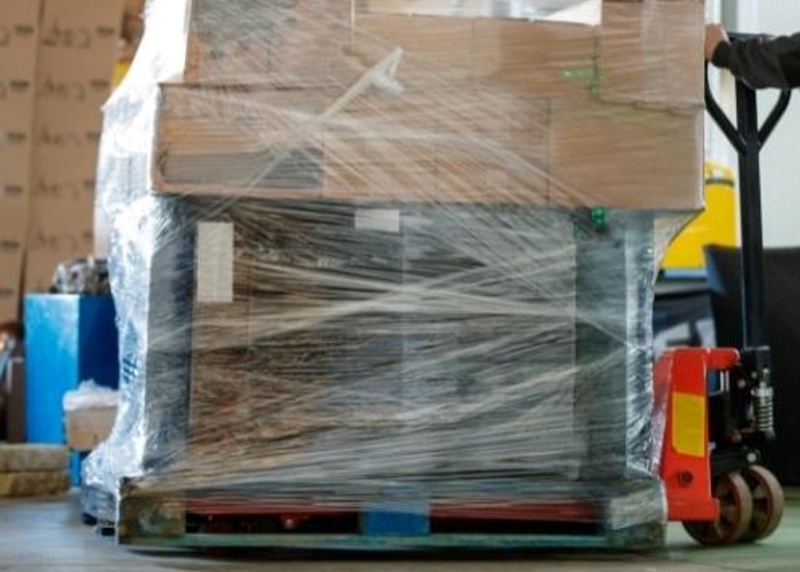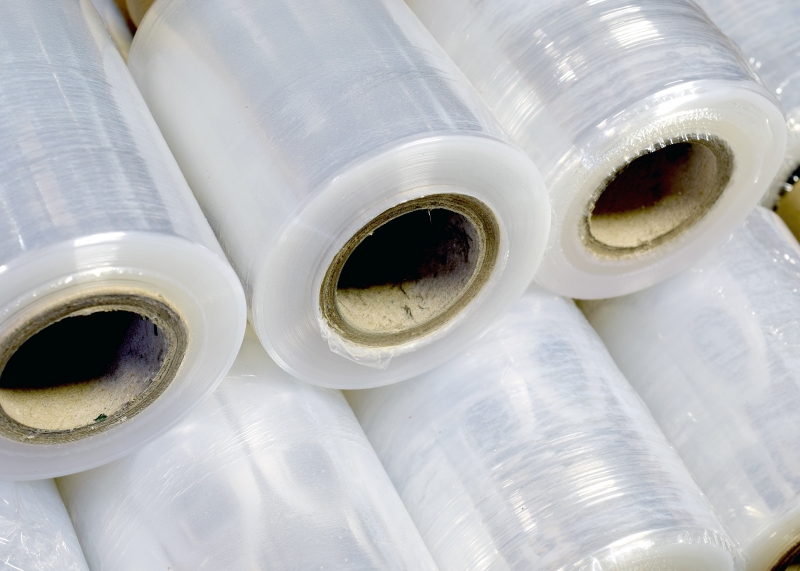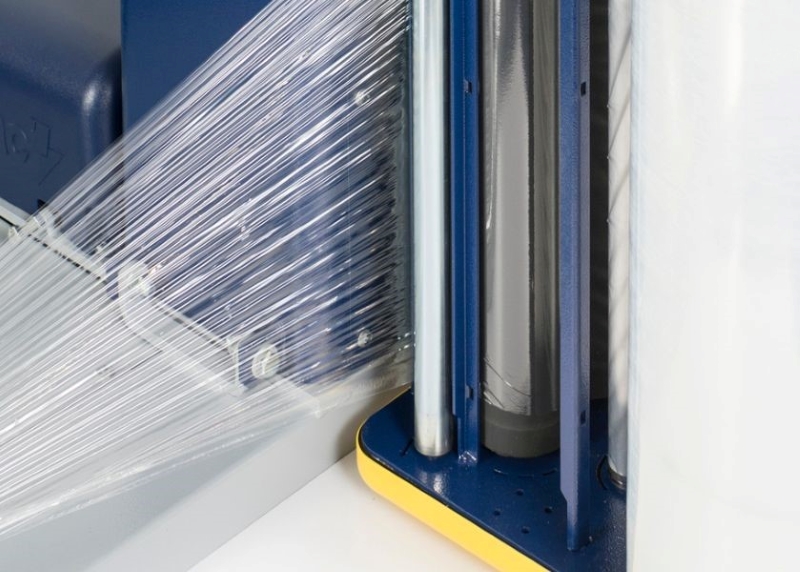
Stretch film is a widely used packaging material, essential for securing products during transportation and storage. Its flexibility, strength, and ability to tightly wrap items make it a popular choice across various industries. However, with the increasing focus on environmental sustainability, businesses are recognizing the need for more responsible practices in packaging. One such approach is the stretch film upcycle process, where used stretch film is repurposed into new products rather than discarded. Upcycling reduces waste, conserves resources, and promotes a circular economy, making it a crucial element in today’s sustainability efforts. As demand for greener practices grows, stretch film upcycling has become an essential focus for companies aiming to reduce their environmental impact. Stretch film upcycle transforms used, recyclable LLDPE stretch wrap into creative solutions, reducing waste and supporting sustainability.
Stretch film upcycling is a process where used stretch film is repurposed into new, functional products, rather than being discarded or recycled into raw materials. Unlike recycling, which typically breaks down the material into its base components to be reused in manufacturing, upcycling transforms waste into products of equal or greater value with minimal reprocessing. Uses for stretch wrap reuse can include creating packaging materials, protective covers, or even items like mats and insulation. Stretch film upcycle efforts are essential for businesses aiming to reduce their environmental footprint and contribute to sustainability initiatives.

Stretch film upcycling can take various forms, repurposing the used material into products such as:
These applications extend the life of stretch film and ensure that it doesn’t end up in landfills prematurely.
The environmental impact of stretch film upcycling is significant, as it helps address waste management challenges in the packaging industry. The key benefits include:
Stretch film upcycle efforts bring several advantages but also face challenges, including:
The stretch film upcycle process offers an innovative and eco-friendly approach to managing packaging waste, providing both environmental and economic benefits. However, it also comes with challenges that need to be addressed through technological advancements and market development.
Locating stretch film upcycle services near you can greatly contribute to reducing plastic waste while supporting sustainable practices. Whether you’re a business or an individual, finding upcycling programs in your local area requires research and strategic planning. Below, we provide detailed steps and considerations for identifying local stretch film upcycling services, along with tips for maximizing the benefits of these programs.
Finding local stretch film upcycle services may seem daunting at first, but there are several methods to help you locate the right options:
For businesses and individuals looking to take advantage of stretch film upcycle programs, consider the following strategies:
Working with local stretch wrap replacement centers brings several key advantages for businesses and individuals alike:
While the benefits of local upcycling programs are clear, there are also some potential challenges:
By engaging with local stretch film upcycle programs, businesses and individuals can make a significant positive impact on both their bottom line and the environment, all while promoting the circular use of packaging materials.
The demand for sustainable packaging solutions has led to the rise of stretch film upcycle products in the marketplace. Businesses looking to minimize their environmental impact can now find a variety of upcycled stretch film products that meet their operational needs while supporting sustainability goals. These products are made from post-consumer or post-industrial waste and are repurposed to provide the same functionality as new stretch film.

Upcycled stretch film products come in a variety of types and specifications, offering flexibility for different industries. Common products include:
Upcycled products typically offer similar performance to traditional stretch film, making them an attractive option for companies committed to sustainability. They may also contribute to reducing costs, as recycled materials often come at a lower price point than new, virgin plastics.
Several companies, including PWP Stretch Film, now offer upcycled stretch film products for sale. These companies specialize in converting post-industrial and post-consumer stretch film waste into high-quality, reusable packaging materials. Some notable offerings include:
By purchasing from these companies, businesses can ensure they are supporting circular economy principles and contributing to a reduction in plastic waste.
Upcycled stretch film can be utilized in a variety of industries where traditional stretch film is commonly used. Examples include:
Using upcycled stretch film offers a number of benefits for businesses and industries seeking more sustainable practices:
While there are many benefits, upcycled stretch film also comes with a few challenges:
| Factor | Upcycled Stretch Film | Virgin Stretch Film |
|---|---|---|
| Environmental Impact | Lower due to reuse of existing materials | Higher, requires raw material extraction and processing |
| Cost | Often lower than virgin stretch film | Typically higher due to production from new materials |
| Durability and Strength | May vary, slightly less durable in some cases | Consistently strong and reliable for all applications |
| Availability | Limited in certain regions, but growing | Widely available globally |
| Sustainability Benefits | Contributes to circular economy and waste reduction | Minimal, as it adds more plastic to the system |
Stretch film upcycle products are becoming an increasingly viable option for businesses seeking to reduce their environmental footprint while maintaining the efficiency and effectiveness of their packaging. By sourcing upcycled stretch wrap film from trusted suppliers like PWP Stretch Film, companies can play a significant role in supporting the circular economy and promoting sustainable practices. As the demand for eco-friendly packaging grows, the availability and quality of upcycled products will likely continue to improve.
Incorporating sustainable practices in packaging starts with optimizing the use of stretch wrap rolls. Businesses that rely heavily on stretch film for packaging and pallet wrapping can take steps to minimize waste, extend the lifespan of each roll, and integrate stretch film upcycle efforts. By adopting smarter usage strategies and incorporating upcycled materials, companies can reduce their environmental impact while maintaining efficiency.
Maximizing the efficiency of each stretch wrap roll is essential for reducing material consumption and minimizing waste. Here are some best practices that help businesses use stretch wrap more sustainably:
Extending the life of stretch wrap rolls helps reduce consumption, which in turn decreases the overall environmental impact. Businesses can take the following steps to maximize the longevity of their stretch wrap:
One of the most effective ways to reduce the consumption of stretch film is to use pre-stretch techniques. Pre-stretching is a process where the stretch film is mechanically stretched before being applied to the load. This method helps maximize the use of each roll, resulting in less film being required to secure the load. The benefits of pre-stretching include:
Optimizing stretch wrap roll usage is a vital step toward sustainability in packaging operations. By adopting best practices, such as using upcycled materials, pre-stretch techniques, and proper storage, businesses can significantly reduce material waste, extend the lifespan of each roll, and reduce their environmental impact. The inclusion of stretch film upcycle products not only supports sustainability goals but also helps lower costs and enhances operational efficiency.
Pallet wrap plays a critical role in the logistics and shipping industry. It ensures that goods are securely packed for transport, minimizing damage and loss. However, given the high volume of pallet wrap used in large-scale operations, it also generates significant waste. To combat this issue, warehouses can implement upcycling programs that repurpose used pallet wrap, helping reduce plastic waste and supporting more sustainable packaging practices. In this section, we’ll explore how stretch film upcycle efforts can be integrated into warehouse operations and the benefits these practices provide.
Pallet wrap, also known as stretch wrap, is essential for stabilizing goods during transport and storage. Its primary functions include:
Warehouses can significantly reduce their environmental impact by developing and implementing upcycling programs for used pallet wrap. Here’s how these programs can be established:
The advantages of integrating a stretch film upcycle program into warehouse operations extend beyond reducing plastic waste. Upcycling provides several key benefits:
While the benefits are clear, there are also challenges to consider when implementing pallet wrap upcycling in warehouses:
Integrating pallet wrap upcycling programs into warehouse operations is a powerful way for companies to reduce waste, improve sustainability, and lower costs. By partnering with upcycling facilities, implementing collection and sorting systems, and educating employees, warehouses can ensure that used pallet wrap is repurposed effectively. Stretch film upcycle efforts not only benefit the environment but also strengthen a company’s brand reputation and contribute to long-term financial savings. With the growing demand for sustainable business practices, now is the ideal time for warehouses to explore pallet wrap upcycling as part of their operational strategy.
Stretch film’s transparency, elasticity, and smooth texture make it a versatile material for artistic creations. Artists and designers can use it to craft intricate sculptures, weave it into functional art like lampshades or wall panels, or create immersive installations that reflect environmental themes. For example, stretch film can be layered to mimic glass for cost-effective yet striking visual effects. Integrating it into art not only raises awareness about upcycling but also showcases how waste can transform into beauty and value.
In agriculture, used stretch film can be repurposed as greenhouse covers, providing plants with protection against harsh weather while maintaining light transmission. It can also be applied as plastic mulch for weed control, reducing the need for chemical herbicides and preserving soil moisture. Farmers can create temporary shelters for tools or livestock using upcycled film, offering a low-cost solution to meet agricultural needs. By extending its life in agriculture, stretch film contributes to both resource efficiency and cost savings for farmers.

Thanks to its flexibility and ability to trap air when layered, stretch film can serve as insulation for shipping containers or emergency shelters. This application is particularly useful in cold storage or temporary housing solutions during disasters. By layering and compacting used stretch film, it can provide thermal and moisture resistance. Such upcycling not only extends the material’s usability but also opens opportunities in disaster management, logistics, and construction sectors.
Stretch film can be reprocessed into reusable packaging materials such as durable shopping bags, protective sleeves for fragile items, or compression wraps for products during shipping. For smaller businesses, it can serve as a sustainable and affordable alternative to new plastic. Additionally, creative designs like woven or layered patterns can make these upcycled products attractive for eco-conscious consumers, merging functionality with aesthetic appeal.
Industries often require durable materials for secondary uses, and stretch film can be upcycled into strong ropes, protective tarps, or cushioning wraps for machinery. These products can be designed to withstand industrial environments while offering a cost-effective alternative to traditional materials. Upcycled stretch film ropes, for instance, can be used in construction or marine settings, while tarps provide lightweight weatherproofing solutions.
Stretch film can play a central role in sustainability-focused education programs. Workshops can teach students and communities how to repurpose used stretch film into functional or decorative items, like storage baskets or rain covers. DIY kits for crafting with stretch film can also be developed, encouraging hands-on learning about upcycling. These initiatives not only reduce local waste but also foster a culture of sustainability and innovation, inspiring participants to think creatively about reusing materials.
By embracing these enriched directions, stretch film upcycle becomes a multifaceted approach to sustainability, blending environmental responsibility with economic and creative opportunities.
To achieve an effective recycling plan, stretch film upcycle primarily involves materials that can be repurposed efficiently while maintaining environmental and cost-effectiveness.
LLDPE is the primary material used in most stretch films. It is lightweight, flexible, and highly elastic, making it easy to stretch and manipulate. For upcycling purposes, LLDPE stretch film can be processed into pellets and reused to produce new stretch film or other plastic products such as bags, pipes, or containers. Its recyclability makes it a preferred choice for sustainable packaging and upcycling projects.
Stretch films made from PCR plastics are manufactured using plastic waste collected from consumers. These materials already embody sustainability principles and are ideal for further upcycling. PCR stretch films can be converted into durable materials like benches, floor mats, or construction barriers, extending their usability while keeping waste out of landfills.
These films consist of multiple layers of polymers, combining strength and flexibility. While they can be slightly more challenging to recycle than single-layer films, their layered structure makes them valuable for upcycling into products like insulation panels or heavy-duty tarps. Processing facilities equipped to handle multi-layer plastics can extract significant value from these materials.
Emerging biodegradable stretch films made from plant-based polymers, like polylactic acid (PLA), are designed to break down naturally. While these are not typically used for upcycling due to their limited lifespan, they are ideal for environments where conventional recycling is unavailable. Users focused on sustainable practices can choose these films for applications where biodegradability aligns with their goals.
Certain stretch films include additives for enhanced strength or UV resistance. These films are ideal for upcycling into products requiring durability, such as outdoor furniture or protective covers. However, users should verify the compatibility of these additives with their chosen recycling or upcycling methods, as some may require specialized processing.
Stretch films used in non-food applications are easier to recycle because they do not have contamination risks associated with food-grade materials. These are commonly used in industrial settings and can be upcycled into products like industrial pallets, traffic cones, or storage bins.
By understanding these material options, users can select the most suitable type of stretch film for their specific upcycling or recycling plans, aligning with their sustainability and functionality goals.
Reducing stretch film waste is a key component of an effective stretch film upcycle strategy, helping to save resources while promoting sustainability. Below are detailed methods to minimize stretch film waste:
Pre-stretch film is pre-elongated to its near-breaking point before being rolled, significantly reducing the amount of plastic required to secure loads. This type of film ensures employees use the optimum amount of material, minimizing waste. Pre-stretch film also provides enhanced load stability due to its consistent tension, reducing the risk of overuse while maintaining secure packaging.
Implementing a stretch film recycling program at your facility is one of the most impactful ways to reduce waste. By diverting used film from the waste stream, companies can reduce landfill contributions and save significantly on trash disposal costs. Recycling programs also create opportunities to repurpose the material for other applications, aligning with broader sustainability goals.
Collaborating with suppliers and customers can further enhance recycling and waste reduction efforts. For example:
Automatic and semi-automatic stretch wrapping machines optimize film usage by stretching the material further than manual wrapping methods. These machines improve the tensile strength of the wrap, reduce the need for overwrapping, and enhance load stabilization. By reducing manual handling errors, companies can slash film consumption and costs.
Adopting lightweight packaging strategies is another effective way to reduce stretch film waste. By replacing heavier materials like wooden pallets with lighter, recycled plastic alternatives, businesses can lower overall packaging requirements and reduce fuel consumption during transportation. Using coreless stretch film in place of traditional wrap also helps reduce waste and streamline operations. This approach not only cuts waste but also improves operational efficiency.
Reducing waste complements stretch film upcycle efforts by maximizing resource efficiency and cutting costs, making it an essential strategy for sustainable packaging practices.
Yes, stretch film can be recycled, but it requires specific recycling processes due to its material composition. Stretch film is typically made from low-density polyethylene (LDPE), which is classified under recycling code “4.” This material is recyclable, but it cannot usually be processed in regular curbside recycling programs because its flexible nature can jam machinery. To recycle stretch film, it needs to be collected separately and taken to facilities that specialize in processing plastics like LDPE. Many commercial operations, such as warehouses and retailers, have recycling programs specifically for stretch film. Additionally, some specialized programs and drop-off locations exist for individual consumers to recycle it. Stretch film upcycle programs are also available, where used film is repurposed into new products rather than being fully broken down and reprocessed. By recycling or upcycling stretch film, businesses and individuals can contribute to reducing plastic waste and supporting more sustainable packaging practices.
No, stretch film and cling wrap are not the same, though they share some similarities in appearance and function. Stretch film is primarily used in industrial and commercial applications, such as securing pallets of goods for transport or storage. It is made from stronger materials like linear low-density polyethylene (LLDPE), designed to stretch around large objects and provide stability. Stretch film is much thicker and more durable than cling wrap and is often applied using specialized machinery in warehouse environments.
On the other hand, cling wrap (also known as plastic wrap or food wrap) is designed for household use, typically to cover and preserve food items. It is thinner, more flexible, and adheres to surfaces using static electricity. Cling wrap is commonly made from polyvinyl chloride (PVC) or polyethylene, which gives it its stretchy, clinging properties. While both products are used for wrapping and securing items, their applications and material compositions are quite different, making them suitable for different uses.
The shelf life of stretch film typically ranges from 12 to 18 months when stored in optimal conditions. Proper storage includes keeping the film in a cool, dry environment away from direct sunlight and extreme temperatures, as heat and UV exposure can degrade the material over time. However, when considering stretch film upcycling, the condition of the film becomes crucial. Even expired stretch film can be repurposed creatively, such as being used to craft lightweight furniture or eco-friendly packaging solutions.
Upcycling old stretch film not only prevents waste but also highlights the material’s enduring utility. If you’re working with older film, ensure it remains pliable and free of brittleness to maximize its upcycling potential. This creative reuse adds value to what might otherwise become waste, extending the film’s functional life beyond its primary purpose while supporting sustainable practices.
Blown film and stretch film differ significantly in manufacturing process and application. Blown film is produced by inflating heated resin into a bubble, resulting in a thicker, more durable material. It is often used for heavy-duty packaging, such as construction materials or industrial equipment. On the other hand, stretch film is a thinner, elastic material designed to wrap and secure items during transport.
For upcycling purposes, the flexibility of stretch film makes it more suitable for crafting and repurposing projects, such as weaving it into mats or using it for lightweight insulation. While blown film’s rigidity can be advantageous for structural upcycling, stretch film’s versatility allows for a broader range of creative applications. Understanding these differences helps identify the best material for specific upcycling goals, transforming what might be considered waste into innovative, sustainable solutions.

My name is James Thompson, and I’m the editor of this website dedicated to Stretch Film, Pallet Wrap, and Stretch Wrap products.
My passion for packaging began when I noticed the challenges companies face in securing their products efficiently for transportation and storage. This inspired me to delve deep into the world of stretch films and pallet wraps, exploring the latest technologies and best practices.
I aim to provide valuable insights, practical tips, and up-to-date industry trends to assist you in making informed decisions. Whether you’re a small business owner or part of a large corporation, my goal is to support you in optimizing your operations and ensuring your products reach their destination safely.
Thank you for visiting, and I look forward to accompanying you on your journey toward better packaging solutions.
Comments are closed